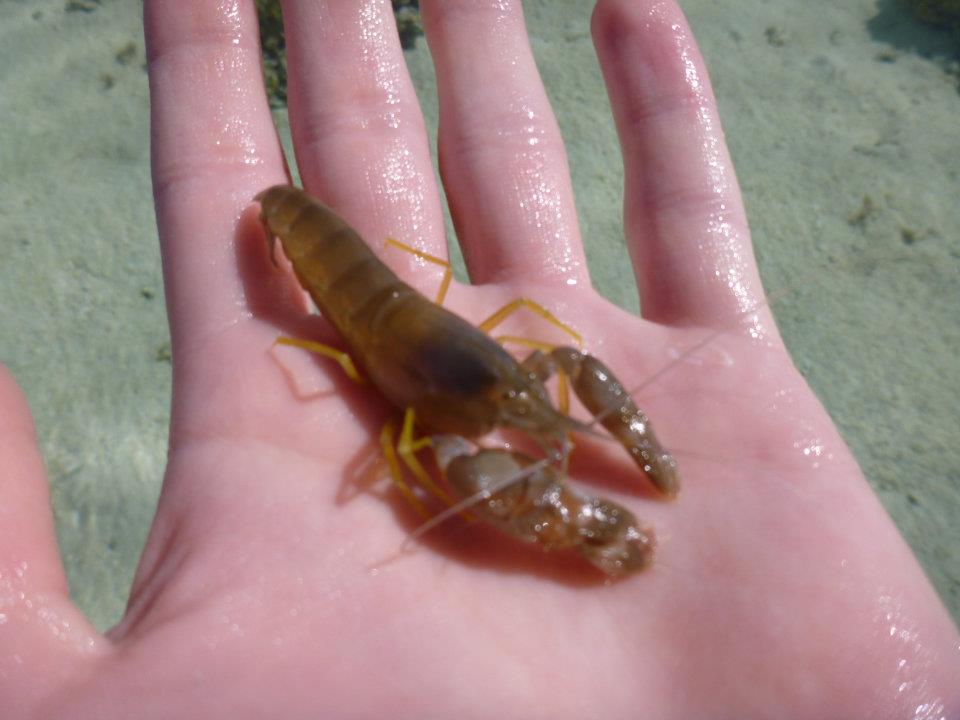Brief Summary
Alpheus strenuus, also known as the snowflake snapping shrimp, is indigenous to the west Pacific and Indian ocean with a wide distribution from the Red Sea to Australia and French Polynesia (Banner & Banner, 1982). These shrimp occupy burrows and tunnels under boulders and coral rubble in sandy areas (Banner & Banner, 1982). Their signature major chelae or snapping claw produces a sound that is so loud it fills the ocean of coastal areas with constant background noise (Versluis et al, 2000). When contracted with force a snap is created by a high velocity water jet creating a cavitation bubble which then collapses (Versluis et al, 2000). This sonic weapon is used to stun prey and deter predators (Banner & Banner, 1982).
The species A. strenuus was first described by Dana (1852) in Tonga and has since been divided into two subspecies: A.s. strenuus and A.s. cremnus due to slight morphological differences in orbital grooves located dorsally on the carapace (Banner & Banner, 1983). In A.s. strenuus these grooves are shallow and more rounded while in A.s. cremnus they are deeper, extended and broader (Banner & Banner, 1982). There are also different habitats associated with the two subspecies: A.s. strenuus is found on coral reefs in sandy areas where boulders and rubble is available while A.s. cremnus is found in muddy estuarine areas and has a distribution limited to the Australian East and West coasts (Banner & Banner, 1982).

Alpheus strenuus strenuus |